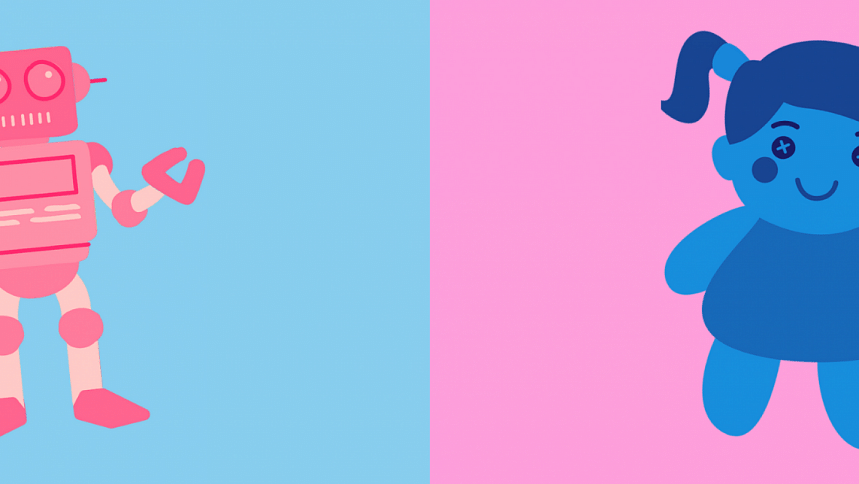Must toys be gendered?

Growing up, most children and parents have the notion that pink is for girls and blue is for boys. The same can be said for the toys that are marketed towards children and their parents.
The way that the portrayal of specific cartoons can be drastically different, like Barbie versus Ben 10, toys are also responsible for overall gender segregation and, to a certain extent, the promotion of sexism.
An extremely popular brand of chocolate chooses to have two separate kinds of containers, a pink one for girls and a blue for boys. Inside, you'll find different types of toys for each of the two sexes.
Toys centred towards boys are notorious for being more traditionally "masculine", in the sense that they are more action-centric. Building blocks, cars, action figures, and even weapons are promoted for boys. While girls are expected to play with dolls, kitchen utensils, and play dress-up among others.
The toy shops in Dhaka, like most toy shops around the world, keep their toys separated at different aisles. One side is entirely bright pink, exuding a gentle, sweet, and calm aura. The other side meant for boys seemed more active, and gave a general vibe of being tough.
This reinforces the stereotype further that males have more strength, are expected to be braver and more outgoing. While females are expected to be more ladylike, reserved, and caring.
Apart from distinctive colours, there are also products displaying floral prints meant to portray femininity and its expected qualities, such as vulnerability. While products for boys lean more on darker colours and athletics.
Often, the two sexes will be attracted to the ones that are sort of "assigned" to them by societal norms. This particular mindset can follow them well throughout their lives, stretching through milestones. Thus, many people are often stuck in a loop where the gender roles assigned to them dictate their life choices, which in turn strengthen the prevalence of such roles in the first place.
Stereotypes seep in quite early since our childhood, often beginning with the toys we are given and choose to play with. Labelling will only continue to make idea of segregation more concrete and it is irrational to be utterly blind to preference due to societal norms and the urge to follow them.
In order to gradually end this mindset, it is highly imperative to pay attention when children close to us get to the age to play with toys. The idea of segregating toys since childhood and everything relevant should be nipped in the bud, so as not to let it grow and harbour in the minds of children.
Gendered toys have been a common stereotype for ages and it is high time we re-consider such choices.
Ayra Areeba Abid's favourite word is 'serendipity' and she's a linguistics geek. Connect with her at [email protected]

 For all latest news, follow The Daily Star's Google News channel.
For all latest news, follow The Daily Star's Google News channel. 



Comments